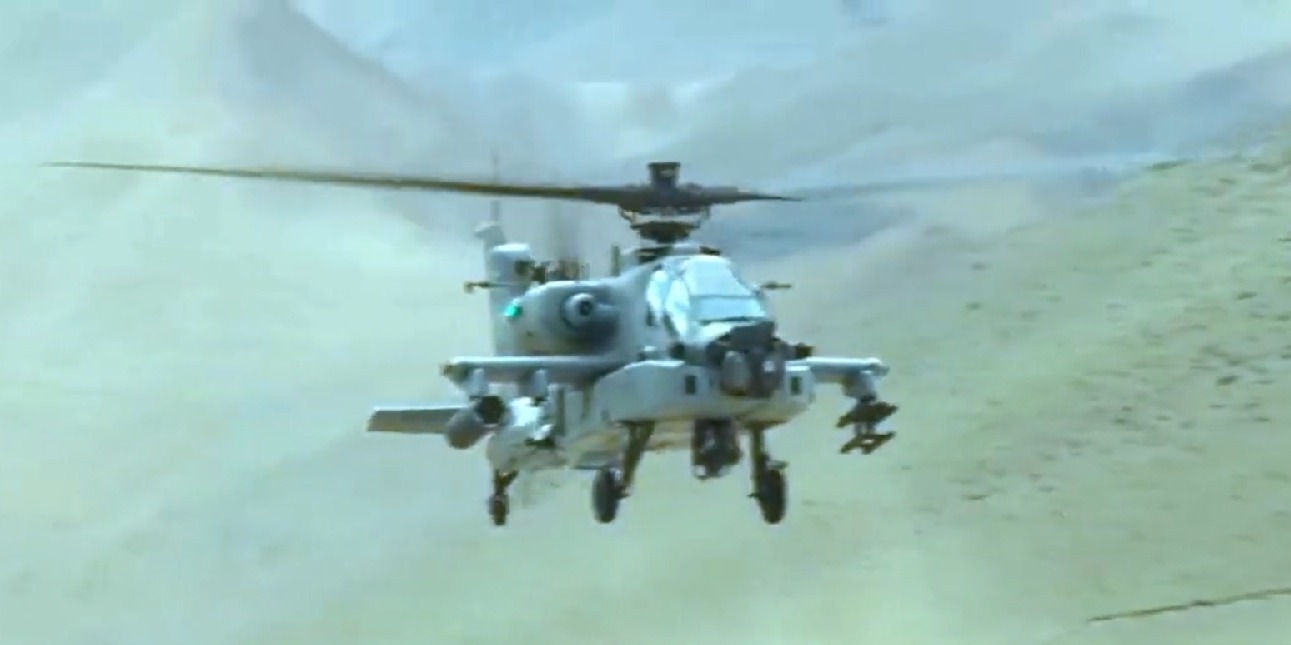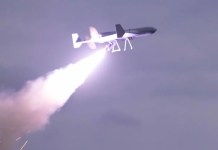It has been four months since a US-made AH-64 Apache heavy attack helicopter, known as “Tank in the Air,” got stranded in high altitude Ladakh region along the Line of Actual Control (LAC) with China following a ‘technical malfunction.’
The Indian Air Force (IAF) is said to be in touch with the Original Equipment Manufacturer (OEM) Boeing to repair or recover the rotary craft, a task proving to be arduous due to its high altitude.
The incident on April 4 is said to have occurred during an operational training sortie. Due to undulating terrain and high altitude, the helicopter reportedly experienced a ‘loss of power.’ The aircraft sustained damage during the mishap.
It was the fifth incident in 2 months days involving an Apache helicopter worldwide. For a helicopter that has been operational for over four decades, it did spark air safety concerns.
The helicopter’s emergency landing spot is situated at about 12,000 feet near Khardung La, one of the highest passes in the area at 18,380 feet. Helicopters traveling towards Siachen Glacier, touted as the highest battleground in the world, have to traverse the Khardung La Pass.
ASTRA: India Targets ‘Russian Customers’ For Its Indigenous BVR Missiles; S.E Asia Top Export Market
The Russian Mi-26 super heavy-lift helicopter, which can carry more cargo than any Western helicopter, has been grounded. The American Chinook heavy-lift helicopter can ‘under-slung’ the Apache and fly it back to the base. However, the rarefied atmosphere and high altitude complicate the operation.
“Engine performance and hence load carrying capacity (of helicopters or aircraft) reduces drastically,” an IAF officer, who has experience operating in high altitude regions, told the EurAsian Times.
“You need a very large area to underslung the item as controls become sluggish due to rarer air. The helicopter’s inertia sets longer, and to stop aircraft, you need a large area. Our helipad dimensions progressively increase with the increase in altitude to cater for less power available and control response,” he said while explaining the things the helicopter pilots have to keep in mind while operating the region.
Forget J-20, China’s H-20 Stealth Bomber Threatens ‘Easy Penetration’ Of LAC; How Can IAF Respond?
The other option is to dismantle the stranded helicopter and then fly it back to the base.
Flying at the limits of the aircraft requires meticulous calculation of the ‘All-up weight’ of the aircraft. A few extra kilograms of the cargo could have lethal consequences.
The OEM would be keen to extend help as the US Army had lost 4 Apaches in a matter of 44 days preceding the IAF’s mishap. The incidents took place on February 12, February 23 (when both pilots were killed), on March 24, and then on March 26.
The March 24 incident happened at Joint Base Lewis-McChord, Washington State, where two pilots suffered injuries, while the March 26 incident occurred at Fort Carson, Colorado, where the helicopter went down during training, injuring its pilots.

US Military Operates About 700 Apache Helos
The IAF operates 22 Apaches helicopters. The Indian Army had ordered six more in 2020.
The IAF inducted the first batch of US-made Apache AH-64E at the Pathankot Air Force Station and the second one in Jorhat, Assam. It was the second US-built helicopter to join the IAF’s fleet after Chinook.
Apaches are considered to be among the most advanced multi-role combat helicopters. According to Boeing, the AH-64 is capable of classifying and threat-prioritizing up to 128 stationary targets in less than a minute and engaging 16.
India’s Apache Deployment
India purchased the Apaches in 2015 under a government-to-government contract. Following the confrontation with China, the Indian Army placed an order for six more helicopters in 2020.
The helicopter has since become a critical part of operations in the region. The Apaches have also been operating in the Siachen Glacier region, as revealed by a video released by the IAF to commemorate the 40 years of ‘Operation Meghdoot’ by the Indian forces to secure the treacherous heights.
India has stationed Apache squadrons along the borders with its main adversaries, China and Pakistan. In addition to the helicopter, the IAF also gets 812 AGM-114L-3 Hellfire Longbow missiles, 542 AGM-114R-3 Hellfire-II missiles, 245 Stinger Block I-92H missiles, and 12 AN/APG-78 fire-control radars.
Apache 64-A is a four-blade, twin-turboshaft helicopter with a nose-mounted sensor suite that simplifies target acquisition. The laser, infrared, and other systems enable the helicopter to locate, track, and attack targets. It also has a combination of laser-guided precision Hellfire missiles, 70mm rockets, and a 30mm automatic cannon with up to 1,200 high-explosive, dual-purpose ammunition rounds.
The helicopter is designed to operate in mountainous terrain. It can conduct precision attacks at standoff ranges and operate in hostile airspace with threats from the ground.
The Indian Ministry of Defence (MoD) stated in a press release that these helicopters can transmit and receive battlefield pictures through data networking.
The AH-64E Apache Guardian can remotely control drones. This allows the Apache’s crew to extend its operational scope and enhance reconnaissance, giving it the capability to direct drones like the MQ-1C Gray Eagle for observation, surveillance, and attack missions. This expands the helicopter’s operational range and intelligence-gathering capacity without exposing the crew to unnecessary danger.
- Ritu Sharma has been a journalist for over a decade, writing on defense, foreign affairs, and nuclear technology.
- The author can be reached at ritu.sharma (at) mail.com
- Follow EurAsian Times on Google News




